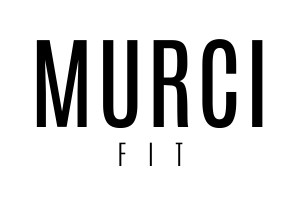Magic Programs vs. Principles
I get asked a lot of the same questions all of the time.
How much protein do you need?
What’s the best exercise for chest/glutes/biceps?
And so on.
There’s no such thing as a stupid question, but if there was one question I’m frequently asked that annoys the hell out of me, it would have to be along of lines of:
What do you think of keto?
What do you think of The Texas Method?
What do you think of intermittent fasting?
What do you think of German Volume Training/ 5×5/PHAT?
And the list goes on and on and on.
Give a program a fancy name and have a celebrity pushing it and you have yourself an irresistible program that everyone just can’t wait to try.
But can you guess why these types of questions get annoying versus the ones I started this post with?
Simple:
- They’re placing the program over the principles.
- They value the magic formula over the key ingredients.
So then people start to value magic programs instead of sitting down and really thinking about which check-boxes they need to cross off to be successful and how those programs do so.
So I’m writing this post to highlight the importance of looking at overall principles when deciding what to do with your training/nutrition rather than looking at magic programs and secret recipes to get the job done for you.
Magic Programs vs. Principles
When you look at any program in the diet or training world, you have to break it down to the key components.
What exactly is this program accomplishing that will bring about the changes that we want based on the best available evidence we have?
For example, in a diet program:
- How are calories being set?
- What is the macronutrient breakdown?
- How are the meals timed across the day?
- and how are micronutrients being met?
THESE are the changes that are going to make an impact on your physique – regardless of which special program you are using.
In a training routine, you need to look at:
- What is the total weekly training volume?
- What intensity is being used?
- How close to failure are you training?
- How frequently are you hitting each muscle group?
- Are the exercises most effective for the targeted muscles?
- and whether the program is periodized in any way.
THESE are the things that are going to stimulate muscle and strength gains over time.
Call your program whatever you want, but when it all comes down to it, this is what needs to be there if you want to be effective with your time in the kitchen or gym.
The Power of Individualization
Furthermore, default programs out there are missing out on a key ingredient that can’t be ignored: the individual.
When you have a set program that is thrown around out there, it is a template. A certain system.
But there’s a problem:
There is no “one size fits all” solution.
Each person has different needs and responds to training and nutrition differently.
There are similarities, sure. But if you want the best results for yourself (and why wouldn’t you?), then it’s in your best interest to do your homework and create or seek out someone to create and monitor your program for you.
A program can never be the end all be all.
At best, it’s a tried and proven template that has to be customized and modified to the individual.
Conclusion
From now on, when you hear someone talking about a certain program, ask yourself:
- What are the key components of this program?
- How do they match up with what we know about fat loss, muscle growth, and so on?
These are the questions you have to ask.
And when you do, you’ll realize that there are an infinite amount of solutions that can work. It’s all up to you and what you want to achieve based on the fundamental, time-tested principles.
And if you don’t know those principles behind muscle growth or fat loss, consult my book here.
Or hire me as your exclusive online coach today. 33% deal still going on now until the end of December.
Be well.
Joseph Murci
Cover image: Ryan Terry.



Leave a Reply